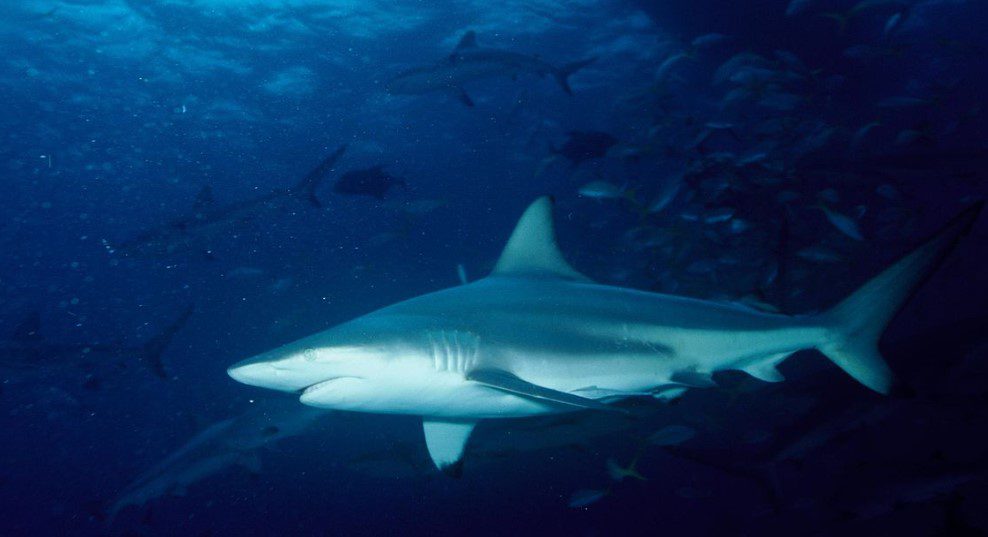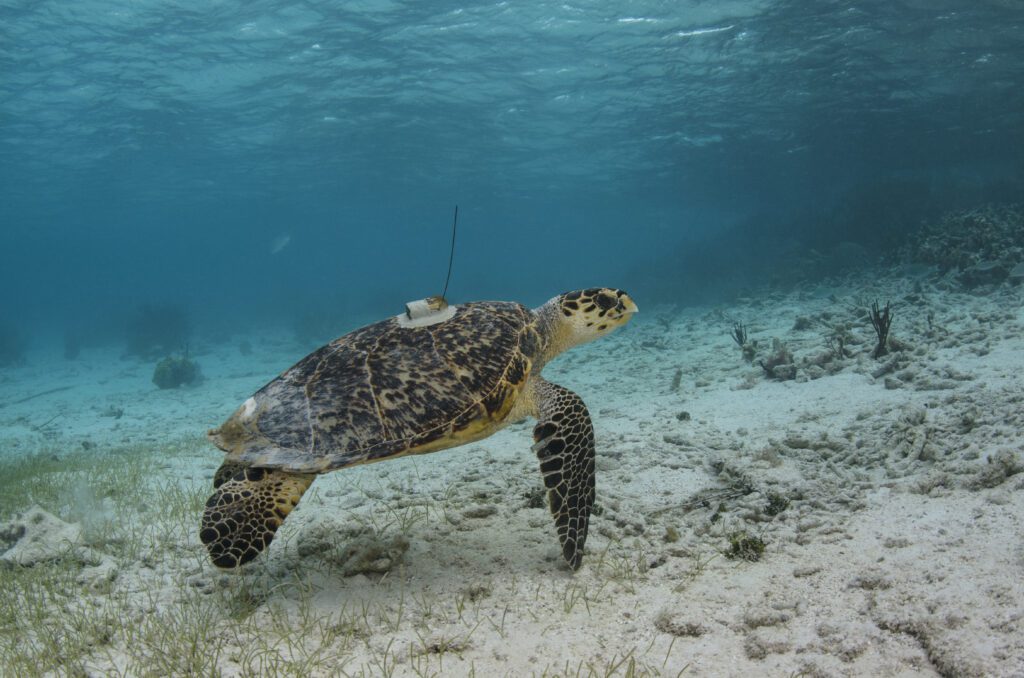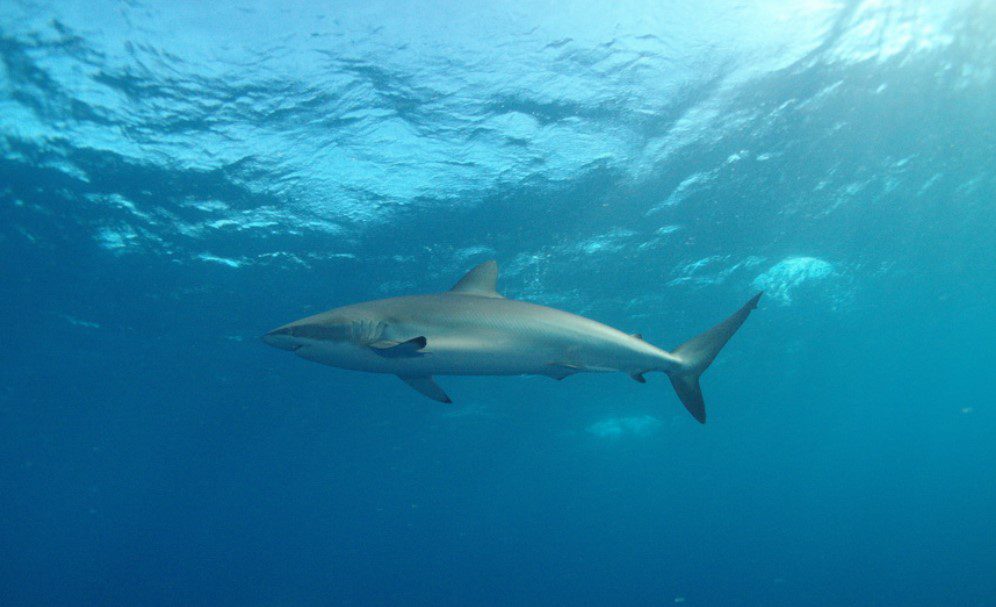Hawksbill turtles are highly migratory, and nest on sandy beaches throughout the tropics and subtropics. Upon hatching, the small juveniles are carried to the open ocean, where they remain until they reach a size of 20-30 cm (8-12 inches), after which they settle into hard bottom habitats, such as coral reefs and seagrass beds. Once they are settled, the turtles spend most of their time on the bottom, either foraging or resting, and make occasional forays to the surface to take a breath. Mature hawksbills undertake breeding migrations, and the females are known to return to the same beach where they were hatched to lay their eggs.

Blacktip shark
The blacktip shark is a sturdy, gray, medium-sized shark characterized by the black markings on the tips of its fins and a distinct white ‘z’



